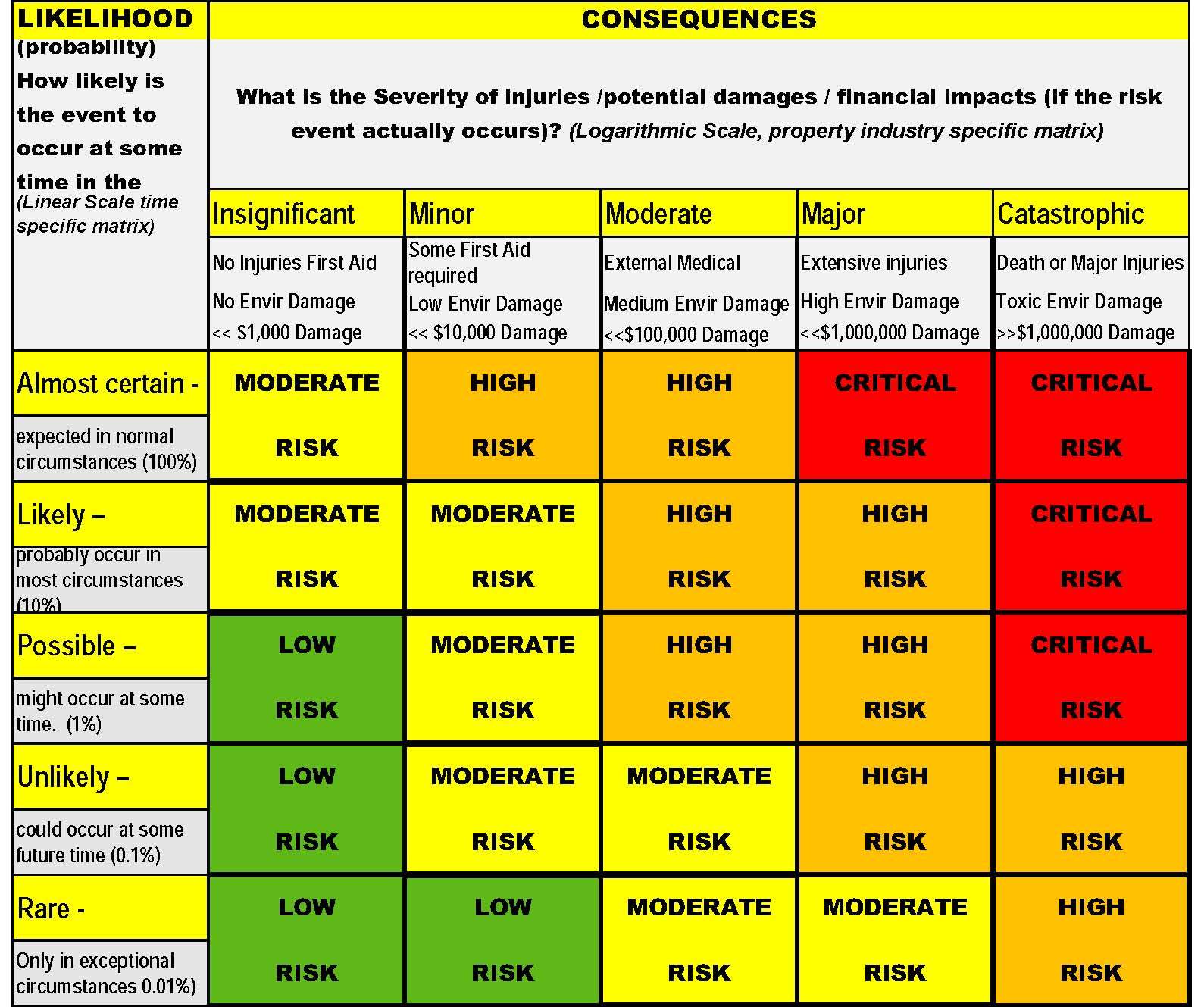How to Complete a Risk Assessment
A risk assessment is a systematic examination of a task, job or process that you carry out at work for the purpose of identifying the significant hazards, the risk of someone being harmed and deciding what further control measures you must take to reduce the risk to an acceptable level.
- Identifying the significant hazards that are present (a hazard is something that has the potential to cause someone harm or ill health).
- Deciding if what you have already done reduces the risk of someone being harmed to an acceptable level, and if not;
- Deciding what further control measures you must take to reduce the risk to an acceptable level.
Who should do risk assessments?
Risk assessments should be overseen by a person who is experienced and competent to do so, competence can be expressed as a combination of Knowledge, Awareness, Training, and Experience. As needed employees that work in the area should be consulted to help identify risks, as they are job experts in their area.
Remember competence does not mean you have to know everything about everything, competence also means knowing when you know enough or when you should call in further expert help.
8 steps to carrying out a risk assessment;
- Identify the hazards
- Identify those at risk
- Identify existing control measures
- Evaluate the risk
- Decide/Implement control measures
- Record assessment
- Monitor and review
- Inform
Look for the hazards that you could reasonably expect to result in significant harm, for example;
Slipping and tripping hazards from poorly maintained floors, Fire hazards from flammable materials etc.
Check Out: Fire Risk Assessment
Identify those at risk
Think about individuals or groups of people who may be affected e.g.
- Office staff
- Maintenance personnel
- Members of the public
- Machine operators
Particular attention must be paid to disabled staff, lone workers, temporary staff and young inexperienced workers.
Identify Existing Control Procedures
Examine how you already control the risks; it is unlikely that your workers are getting injured on a daily basis, so you must have some controls in place already. To decide if those existing control procedures are adequate, and to evaluate the risk, complete a risk ranking which will determine the residual risk.
Check Out: Risk Assessment Guidelines
Evaluate the risk
A risk is defined as the likelihood that a hazard will cause harm
I.e. Risk = Likelihood x Severity – below is an example of a simple 1-5 risk ranking system.
- Rare
- Unlikely
- Possible
- Likely
- Almost Certain
If the hazard does result in harm, how severe would the injury be?
- Scratch (trivial)
- Cut (Minor injury)
- Fracture (Major injury – Over 3 day injury)
- Amputation (Major injury)
- Death (Death)
Decide and Implement new control measures
If the risk is not adequately controlled decide which new control procedures are required and ensure these procedures are implemented. The control measures are the actions performed to reduce either the probability of the accident happening or the severity of the outcome, and where possible both. When considering what measures to put in place it is important to consider both severity and likelihood, in order to minimise the overall risk.
When deciding what new control measures will be required, it is helpful to work through the ‘hierarchy’ of controls. The hierarchy is as follows:
- Elimination – get rid of the risk altogether
- Substitution – exchange one risk for something less likely or severe
- Physical Controls – separation/Isolation, eliminate contact with the hazard
- Administrative controls – safe systems of work, rules in place to ensure safe use/contact with hazard
- Information, instruction, training & supervision – warn people of hazard and tell/show/help them how to deal with it
- Personal Protective Equipment – dress them appropriately to reduce severity of accident
Control measures should be practical and easy to understand (what to do and why they are doing it), applicable to the hazard, able to reduce the risk to acceptable levels, acceptable to the workforce and easy to operate.
Understanding the Hierarchy of Control will help you better understand how best to mitigate risks
After you have implemented the new control procedures, then re–rank the risks as above to determine the new residual risk, you should aim to get the risk to as low as is reasonably practicable until it is at a tolerable level.
Record the assessment
Keep copies of the assessments for your records and for inspection by OSHA should they ever be requested. Retaining copies is also helpful in reviewing the risk assessment, at a minimum annually, or when it becomes imperative to add to it, such as when new equipment, or workplace layout changes.
Monitor and review
You must ensure that the control measures are achieving the desired level of control. You must review the assessment on a regular basis or if anything changes e.g. new staff, change in machinery or process.
Remember, even if you work in a seemingly low risk working environment, hazards exist and the risk management process is still an essential part of creating your safe work systems.

